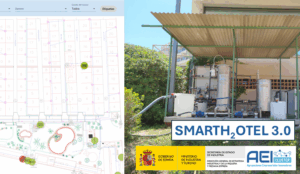Throughout the turn of the century, a remarkable architectural transformation has taken place throughout Spain, including the northern regions, traditionally known for their whitewashed walls. The trend has shifted dramatically towards the use of exposed stone, a style that not only highlights the beauty of natural materials, but also reinforces the durability and historical character of the homes.
The rise of exposed stone can be attributed to several factors, including a greater awareness and appreciation for vernacular architecture and sustainability. Homeowners and architects today have opted for local materials that not only harmonize with the surroundings, but also respect traditional construction techniques. This change has been particularly noticeable in the mountainous regions of the north, where stone is extracted from local quarries and skillfully used to build homes that blend seamlessly with the landscape.
Franco Martínez, an architect specializing in historic restorations in Cantabria, comments: “The use of exposed stone not only has an aesthetic dimension, but also provides greater protection against the typical climatic rigors of northern Spain. Stone constructions have better resistance to wind, rain, and low temperatures, ensuring greater longevity of the buildings.”
However, this change has not simply been a matter of fashion or aesthetics. Environmental concerns and the desire to reduce carbon footprint have also played a crucial role. Using local materials decreases the need for long-distance transportation, reducing CO2 emissions. Additionally, stone has natural thermal insulation properties, contributing to the energy efficiency of homes.
The transition to exposed stone has also revitalized traditional construction techniques that were being lost. Skilled masons and quarrymen have seen a resurgence in demand for their skills, consolidating a revival of trades that are intrinsically linked to the cultural identity of many communities.
Luis García, a mason from the province of Asturias, says: “My grandparents were quarrymen and for a while it seemed like these techniques were being lost. Now there is a renewed interest, and that not only keeps a tradition alive, but also provides employment for many people.”
The phenomenon has even influenced new urban development projects, with real estate developers seeking to replicate the authenticity and durability of constructions from the past. Modern materials have often given way to stone as a symbol of solidity and respect for the environment.
It is important to note that this change has not been uniform throughout the country. While exposed stone has become a distinctive feature in many areas of the north, regions like Andalucía continue to largely maintain their traditional whitewashing techniques, which are equally valid and specific to the warmer climate of the south.
The transformation of homes in Spain during the turn of the century marks a significant evolution in architecture and construction, reflecting a confluence of tradition, sustainability, and modernity that redefines the way homes are conceived and built in the country.
Referrer: MiMub in Spanish









